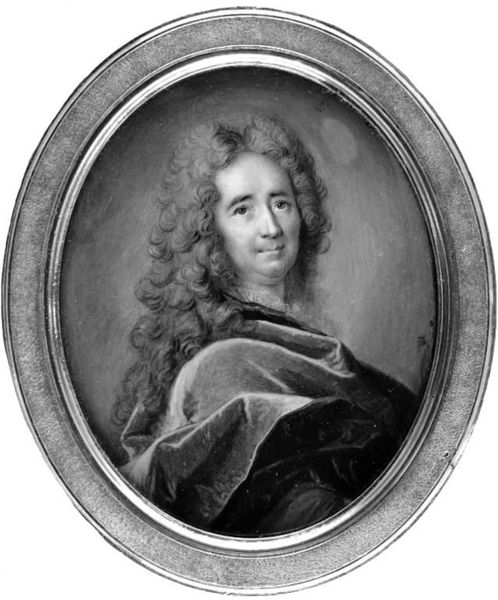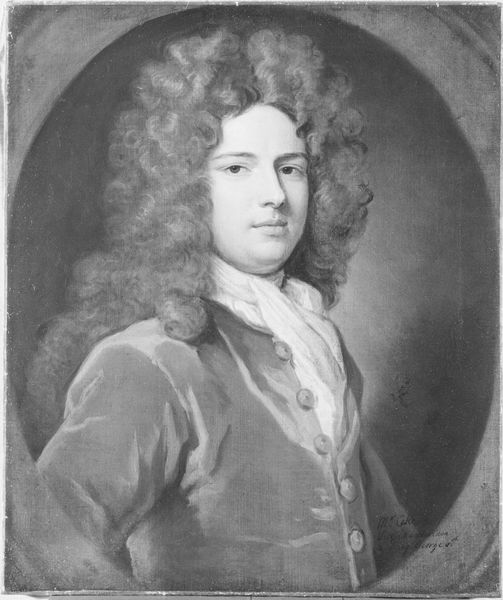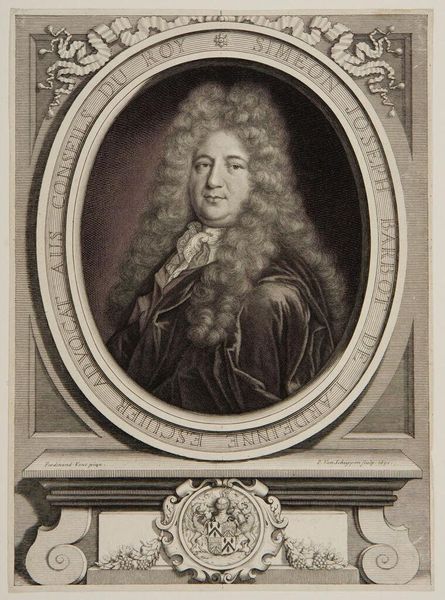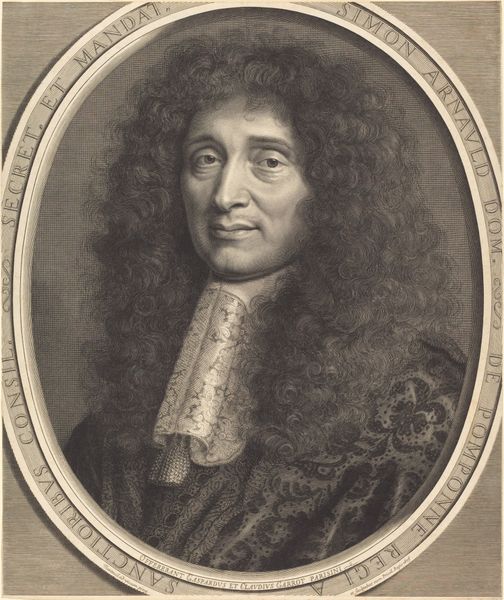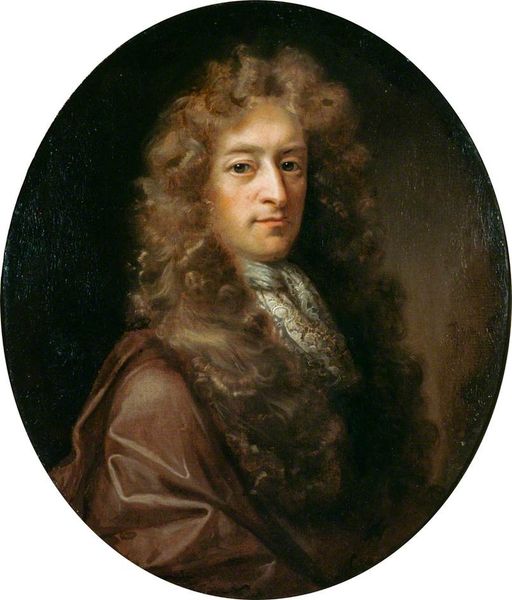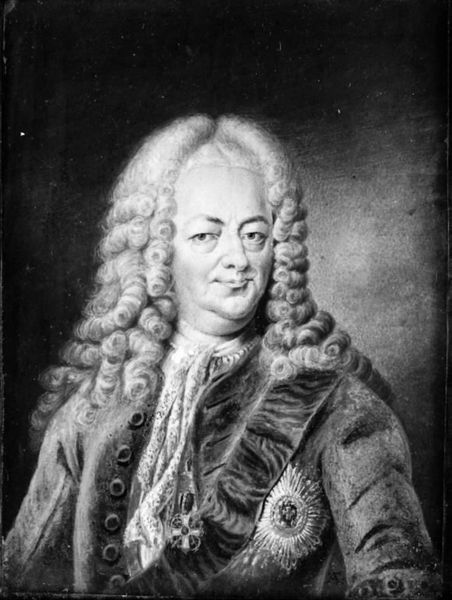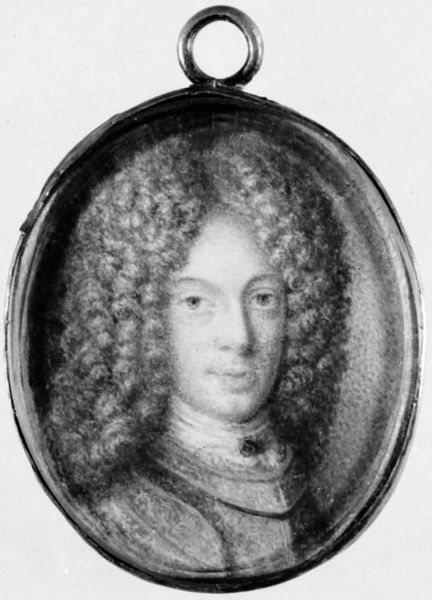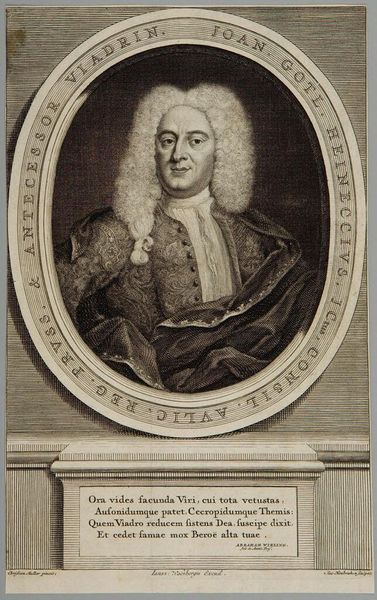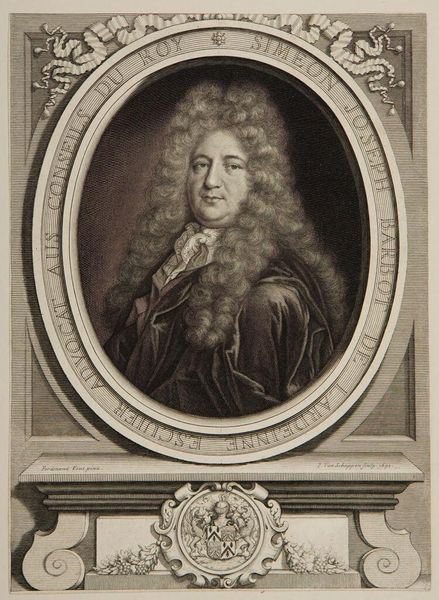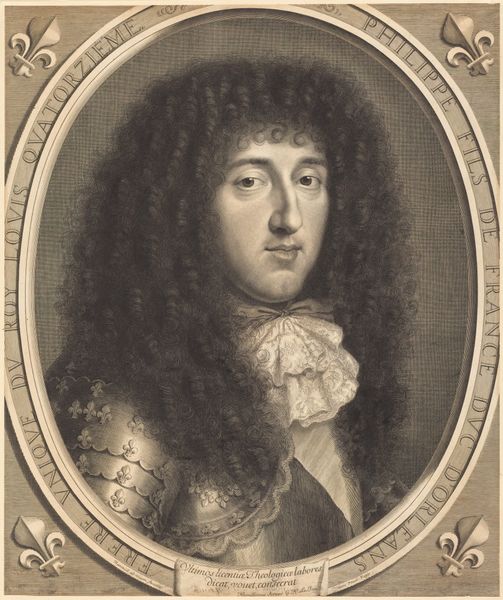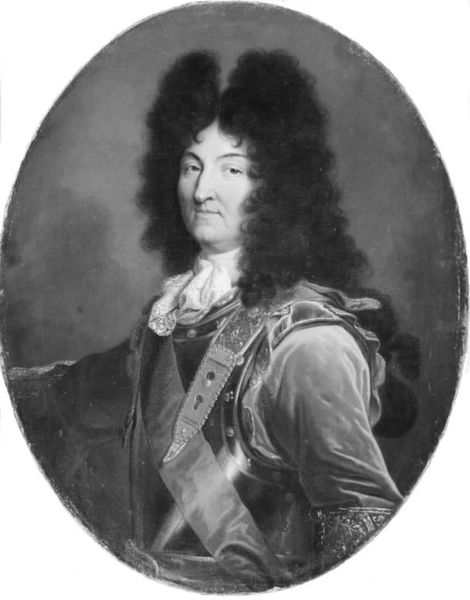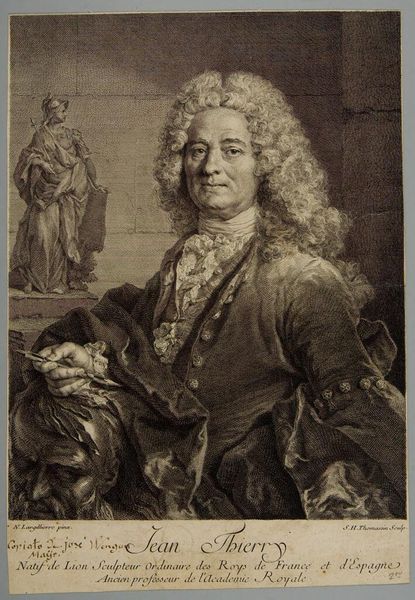
oil-paint, canvas
#
portrait
#
baroque
#
portrait image
#
portrait
#
oil-paint
#
portrait subject
#
canvas
#
portrait reference
#
portrait head and shoulder
#
portrait drawing
#
history-painting
#
facial portrait
#
portrait art
#
fine art portrait
#
digital portrait
Dimensions: 77 cm (height) x 60 cm (width) (Netto)
Editor: We're looking at a 17th-century oil on canvas, "Portrait of a Man" by Nicolas de Largillière, held at the Statens Museum for Kunst. The overwhelming feeling is one of extravagance, mostly driven by that incredible wig. What historical forces do you think were at play to put something like that on canvas? Curator: Exactly! That wig isn’t just hair; it's a statement. Think about the 17th century – the rise of absolutism, particularly in France. Largillière was painting for an elite circle. How do you think portraiture like this served their interests, specifically regarding social hierarchies? Editor: It’s blatant status signaling, right? Like a walking advertisement for wealth and power. So, displaying the painting prominently would reinforce their position in society. Curator: Precisely. And it goes beyond simple display. Consider the Royal Academy of Painting and Sculpture, which significantly shaped artistic taste. This portrait isn't just about the individual; it's a reflection of the Academy’s approved style, and the socio-political function of the artist’s studio, don’t you agree? How does the act of displaying a portrait like this publicly create certain narratives? Editor: It seems like the image reinforces an exclusive club, both through wealth, dress and artistic sensibility. And possessing such art helped cement power over other individuals and classes. Curator: It's a power dynamic visually codified. I hadn’t really thought about the implications until now! Thank you. Editor: This has provided more insight, making the art an engaging dialogue, beyond what is on display.
Comments
No comments
Be the first to comment and join the conversation on the ultimate creative platform.

